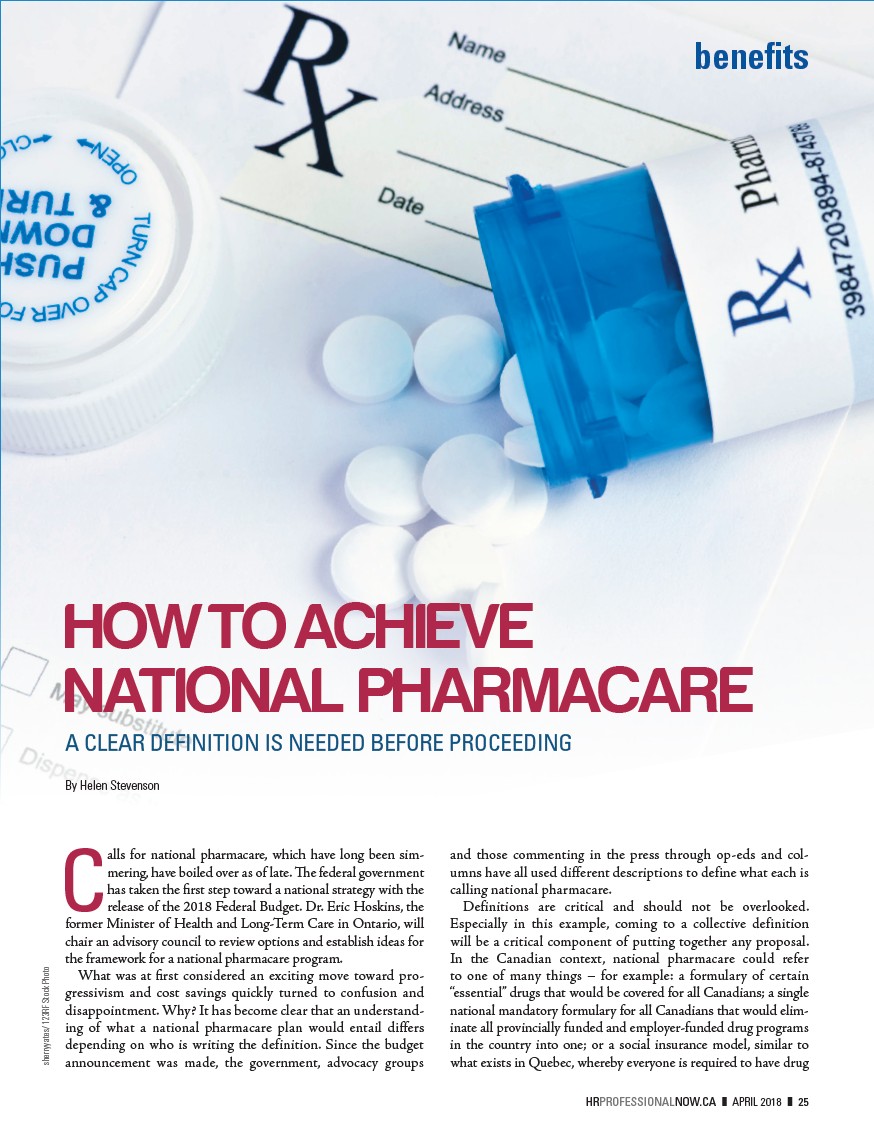
Calls for national pharmacare, which have long been simmering,
have boiled over as of late. The federal government
has taken the first step toward a national strategy with the
release of the 2018 Federal Budget. Dr. Eric Hoskins, the
former Minister of Health and Long-Term Care in Ontario, will
chair an advisory council to review options and establish ideas for
the framework for a national pharmacare program.
What was at first considered an exciting move toward progressivism
and cost savings quickly turned to confusion and
disappointment. Why? It has become clear that an understanding
of what a national pharmacare plan would entail differs
depending on who is writing the definition. Since the budget
announcement was made, the government, advocacy groups
benefits
and those commenting in the press through op-eds and columns
have all used different descriptions to define what each is
calling national pharmacare.
Definitions are critical and should not be overlooked.
Especially in this example, coming to a collective definition
will be a critical component of putting together any proposal.
In the Canadian context, national pharmacare could refer
to one of many things – for example: a formulary of certain
“essential” drugs that would be covered for all Canadians; a single
national mandatory formulary for all Canadians that would eliminate
all provincially funded and employer-funded drug programs
in the country into one; or a social insurance model, similar to
what exists in Quebec, whereby everyone is required to have drug
sherryyates/ 123RF Stock Photo
HOW TO ACHIEVE
NATIONAL PHARMACARE
A CLEAR DEFINITION IS NEEDED BEFORE PROCEEDING
By Helen Stevenson
HRPROFESSIONALNOW.CA ❚ APRIL 2018 ❚ 25